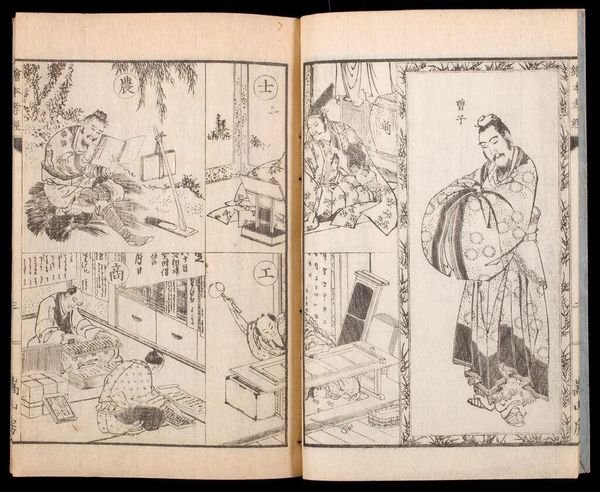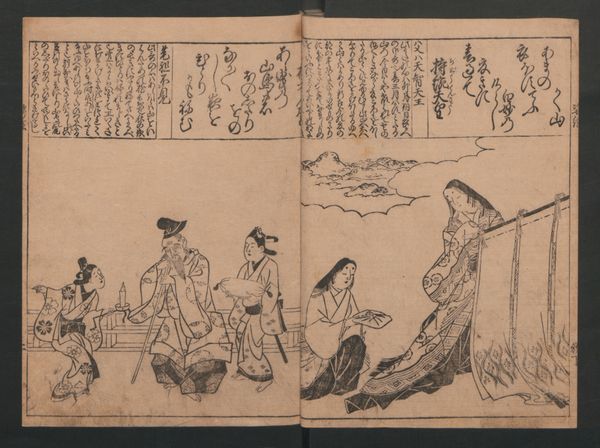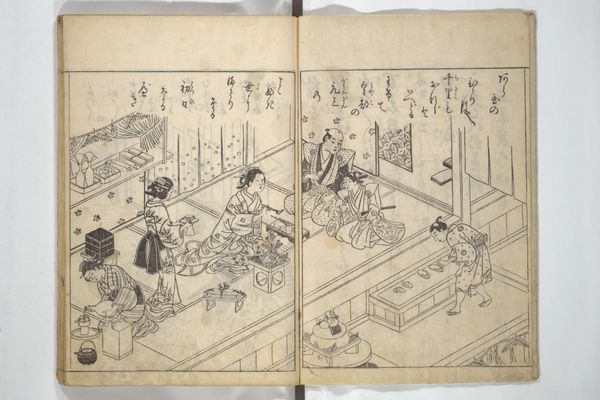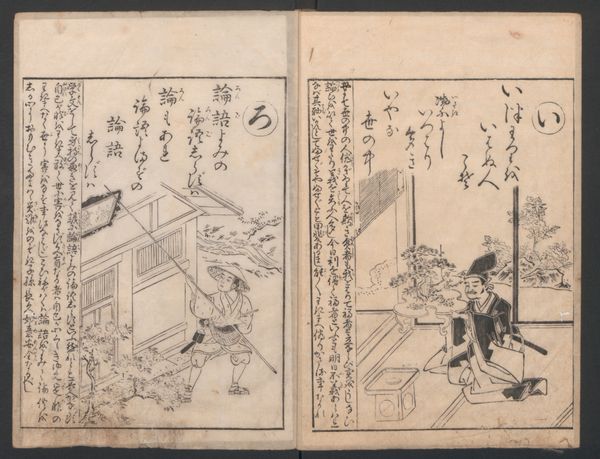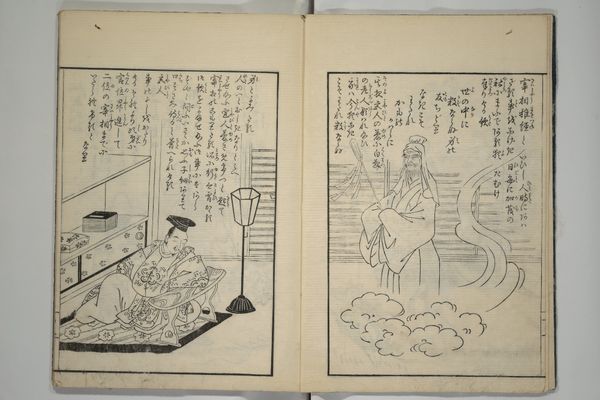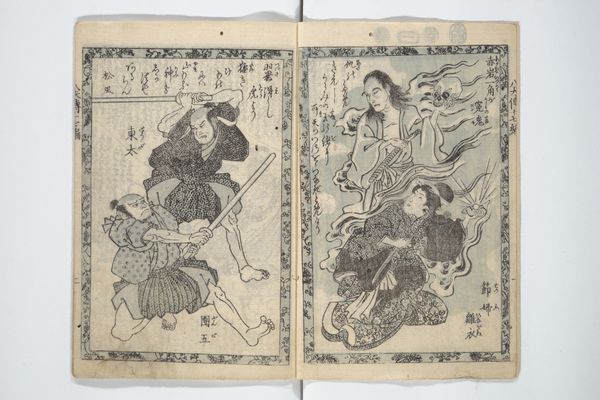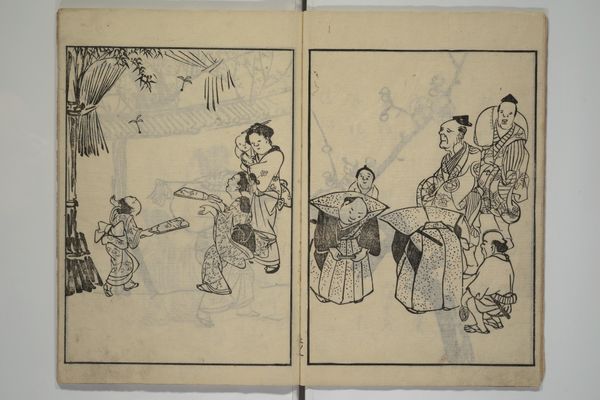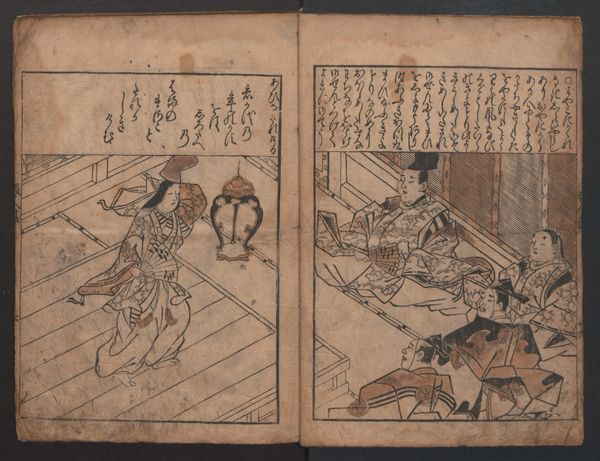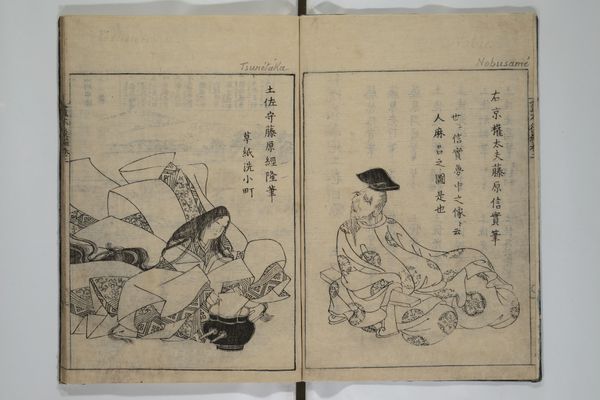![Picture Book of The Kōkyō [Ch. Xiao Qing], Canon of Filial Piety (Ehon kōkyō : [volume 1] 絵本孝経 by Katsushika Hokusai](/_next/image?url=https%3A%2F%2Fd2w8kbdekdi1gv.cloudfront.net%2FeyJidWNrZXQiOiAiYXJ0ZXJhLWltYWdlcy1idWNrZXQiLCAia2V5IjogImFydHdvcmtzLzkyNjcwMTg2LTA5YWYtNGUzMC1hOWY3LTYwMDU3Njk0ODJkOC85MjY3MDE4Ni0wOWFmLTRlMzAtYTlmNy02MDA1NzY5NDgyZDhfZnVsbC5qcGciLCAiZWRpdHMiOiB7InJlc2l6ZSI6IHsid2lkdGgiOiAxOTIwLCAiaGVpZ2h0IjogMTkyMCwgImZpdCI6ICJpbnNpZGUifX19&w=3840&q=75)
Picture Book of The Kōkyō [Ch. Xiao Qing], Canon of Filial Piety (Ehon kōkyō : [volume 1] 絵本孝経 1850
0:00
0:00
drawing, print, paper, ink, woodblock-print
#
drawing
#
medieval
#
narrative-art
# print
#
asian-art
#
ukiyo-e
#
figuration
#
paper
#
ink
#
woodblock-print
#
men
#
calligraphy
Dimensions: each: 9 × 6 3/16 in. (22.8 × 15.7 cm)
Copyright: Public Domain
Editor: This is a page from "Picture Book of The Kōkyō," also known as the Canon of Filial Piety, created by Katsushika Hokusai around 1850. It's a woodblock print using ink on paper. The layout, dividing the page into distinct vignettes, strikes me. What do you make of its compositional structure? Curator: The organization is indeed notable. We can observe a grid-like division, a series of framed scenes. Each compartment functions almost as a miniature world, complete with its own internal logic of form. Notice the consistent use of line; how it defines shapes, creates texture, and guides the eye through each narrative. Editor: The line work is incredibly detailed. Are there specific elements that stand out to you in terms of their formal qualities? Curator: Consider the use of negative space. Hokusai masterfully balances the filled areas with voids, preventing the composition from feeling overcrowded, even with so much detail. The varied patterns within each scene create visual interest without disrupting the overall harmony. Look closely at the textures rendered through line – the wood grain, the fabric folds – it’s a symphony of mark-making. How do the shapes contribute? Editor: It is like the round shape of the man is echoed, the circular pattern and framing adds softness compared to the sharp edges on the left. Curator: Precisely. This deliberate contrast in form introduces a subtle tension. The circular motifs of the figure are set against the architectural rigor, producing visual variety and holding one’s interest. The artist has employed contrasting geometrical elements to establish depth within a primarily planar structure. Editor: This breakdown is fascinating. I see so much more than I did initially! Curator: The essence lies within its internal arrangement; it is through understanding and admiring how all aspects play into the unified wholeness.
Comments
No comments
Be the first to comment and join the conversation on the ultimate creative platform.
